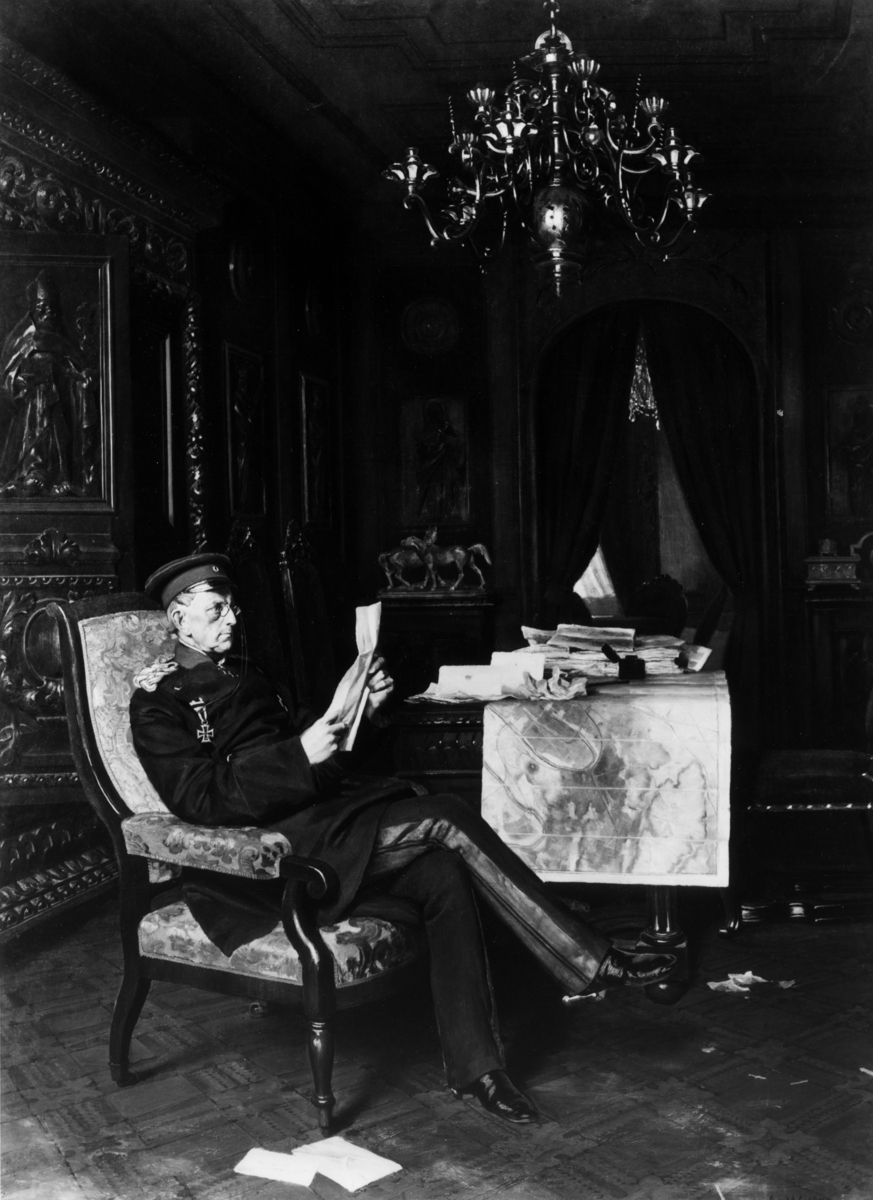Abstract
In October and November 1870, the relatively unknown, 27-year-old
painter Anton von Werner (1843–1915) was invited to Versailles to sketch
military personnel in the headquarters of the Prussian army and general
staff. By that point, the outcome of the Franco-Prussian War had already
been effectively decided (at Sedan on September 1–2). As mobile
operations slowed down, Versailles became the locus of social and
diplomatic as well as military activity. With letters of introduction
from the Grand Duke and Duchess of Baden in hand, Werner was welcomed
into this setting by officers who believed, rightly, that he might
chronicle their role in a great victory. Indeed, Werner effectively
captures the palace ambiance in this preliminary version of a painting
that was completed by the end of 1870. Here, we see the 70-year-old
Chief of the Prussian General Staff Helmuth von Moltke (1800–1891) in
his office in the Rue Neuve in Versailles. Moltke’s unflappable demeanor
and powers of concentration come through as he reads letters and reports
taken from the opened envelope on the floor. Werner’s determination to
portray the details of the room with near-photographic accuracy gives
the canvas a busy effect, which arguably detracts from its aesthetic
impact. It is plausible that the military leaders, diplomats, and
princes who gathered at Versailles in these months felt that painting
was the only medium with enough dignity, tradition, and gravitas to
record their esteemed place in history. It is ironic, therefore, that
they chose to patronize an artist who insisted on including every detail
in his canvases, thereby gesturing towards the newer and less revered
medium of photography.
